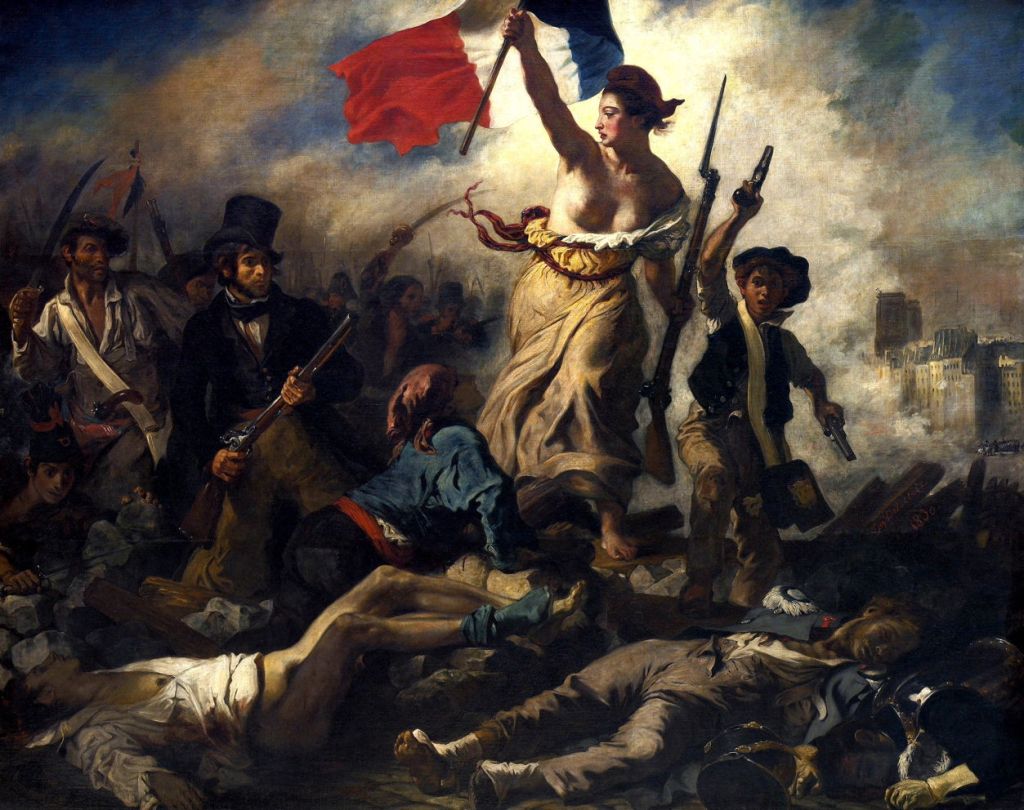Each summer I write a series covering an artist whose work we might think we know, but don’t really know well enough. This year my choice is one of the most important visual artists of the nineteenth century, who laid much of the ground for Impressionism and its successors, Ferdinand Victor Eugène Delacroix (1798–1863).
Several of his paintings are only too familiar, but the importance of his influence is seldom appreciated, and he’s often dismissed as just one of the last Romantic history painters. Over the coming couple of months, I’ll be digging deeper into his life and work, to see why so many of the great visual artists of the late nineteenth century considered his paintings so essential to their art.

In 1822, the young Eugène Delacroix painted one of his finest narrative works, The Barque of Dante, showing Dante and Virgil crossing a stormy river Acheron in Charon’s small boat. It’s typical of his paintings in drawing on a literary narrative, Dante’s Divine Comedy, caused a sensation when exhibited at the Salon, and was bought by the State. It was stimulated by Géricault’s Raft of the Medusa, and marked their close friendship.

Two years later, Delacroix had even greater impact with his account of The Massacre at Chios, followed in 1826 by Greece in the Ruins of Missolonghi. Those two paintings helped secure widespread support for the Greek cause in their war of independence from the Turks.

For The Death of Sardanapalus in 1827 Delacroix turned to a contemporary play by Lord Byron, published in 1821. Sardanapalus was the last of the great Assyrian monarchs, ruling a large empire from his palaces in Nineveh. However, a rebellion grew against him, and the story reaches its climax in the fifth and final act of Byron’s play.
Delacroix departs considerably from Byron’s narrative to invite us to see Sardanapalus in a different light. Most prominent in the foreground is the horrific sight of one of his courtesans about to have her throat slit by a guard. Her face looks up to the heavens, her back is arched, forcing her body and legs into an arc, as she is tensed ready for slaughter. With these scenes of carnage and destruction all around him, Sardanapalus rests, recumbent on his great divan. His face is mask-like, unmoved, and he stares coldly into the distance, his head propped by his right hand.

Just three years later, Delacroix painted Marianne, the personification of the French nation, as the liberty achieved by the July Revolution of 1830, in his most famous Liberty Leading the People (1830). Perhaps most telling of its success is the fact that, two years after it had been bought by the French State, the government decided that its glorification of liberty was too inflammatory for the public to see it any longer.

In 1832, Delacroix became one of the first prominent visual artists to travel and paint in North Africa. Although he initially saw this as a mere escape, he returned with over a hundred drawings and paintings. Inevitably he was denied access to Muslim households and women, and had to rely on the local Jewish community who were less constrained. His faithful realist paintings, including these Women of Algiers in their Apartment (1834), helped start the vogue for Orientalism in European art.

Delacroix also seems to have been among the first to realise the visual potential in the drowning of Ophelia from William Shakespeare’s play Hamlet. His first painting of The Death of Ophelia in 1838 follows Queen Gertrude’s account of events, with Ophelia climbing into a willow tree whose branch breaks, dropping her into the stream below. Later in the century, this was to become a very popular theme among the finest figurative painters.

Although Delacroix seldom painted landscapes, he was a keen follower of developments in British painting at the time. Among his close friends was Richard Parkes Bonington, until his tragically early death in 1828. For Delacroix, skying in pastels, as in this Study of the Sky at Sunset from 1849, was an essential preliminary for his figurative paintings.

Late in his career, Delacroix painted some vast and breathtaking murals. One of the most spectacular paintings of any Ovidian story is his Apollo Vanquishing the Python (1850-51) in the Louvre. Apollo is seen in his sun chariot in the centre, with another arrow poised in his bow ready to strike Python, at the bottom of this image.

His magnificent frescoes in Saint-Sulpice Church in Paris, including this of St Michael Defeats the Devil (1861), were his last major works, and a great physical challenge.
The other major commissioned work in his later years was a series of mythological allegories of the seasons for the Alsacian industrialist Frederick Hartmann, completed just before the artist’s death in 1863. Although considered to be allegories, in that they don’t directly show each season, they’re unconventional in using stories from classical myths which are tied into the seasons.

For Spring, Delacroix chose Eurydice Bitten by a Serpent while Picking Flowers (Eurydice’s Death), in which the bride Eurydice is bitten on the foot (or ankle) by a snake shortly after her wedding, and dies.

The year after Delacroix’s death in 1863, Henri Fantin-Latour painted the first of his group portraits as Homage to Delacroix. Its figures include Champfleury and Baudelaire, together with those who Fantin rated as the brightest and best among modern painters, including Whistler and Manet.
I hope that you will join me in the coming weeks as I explore the remarkable art of Eugène Delacroix.

